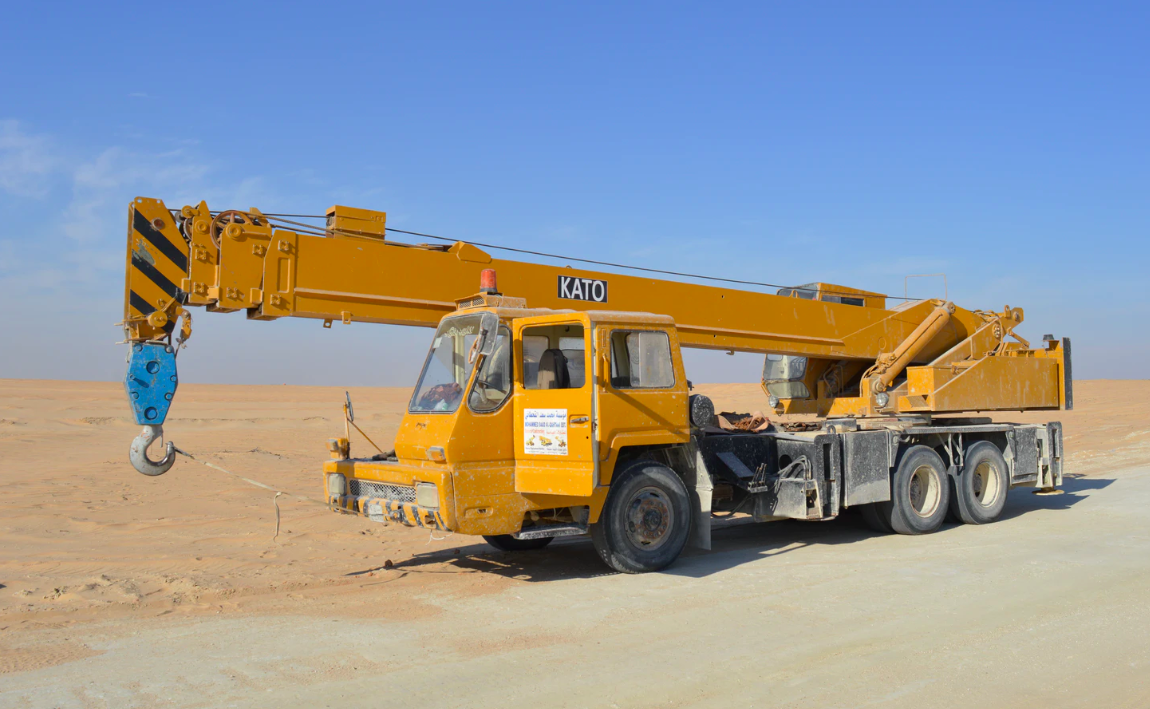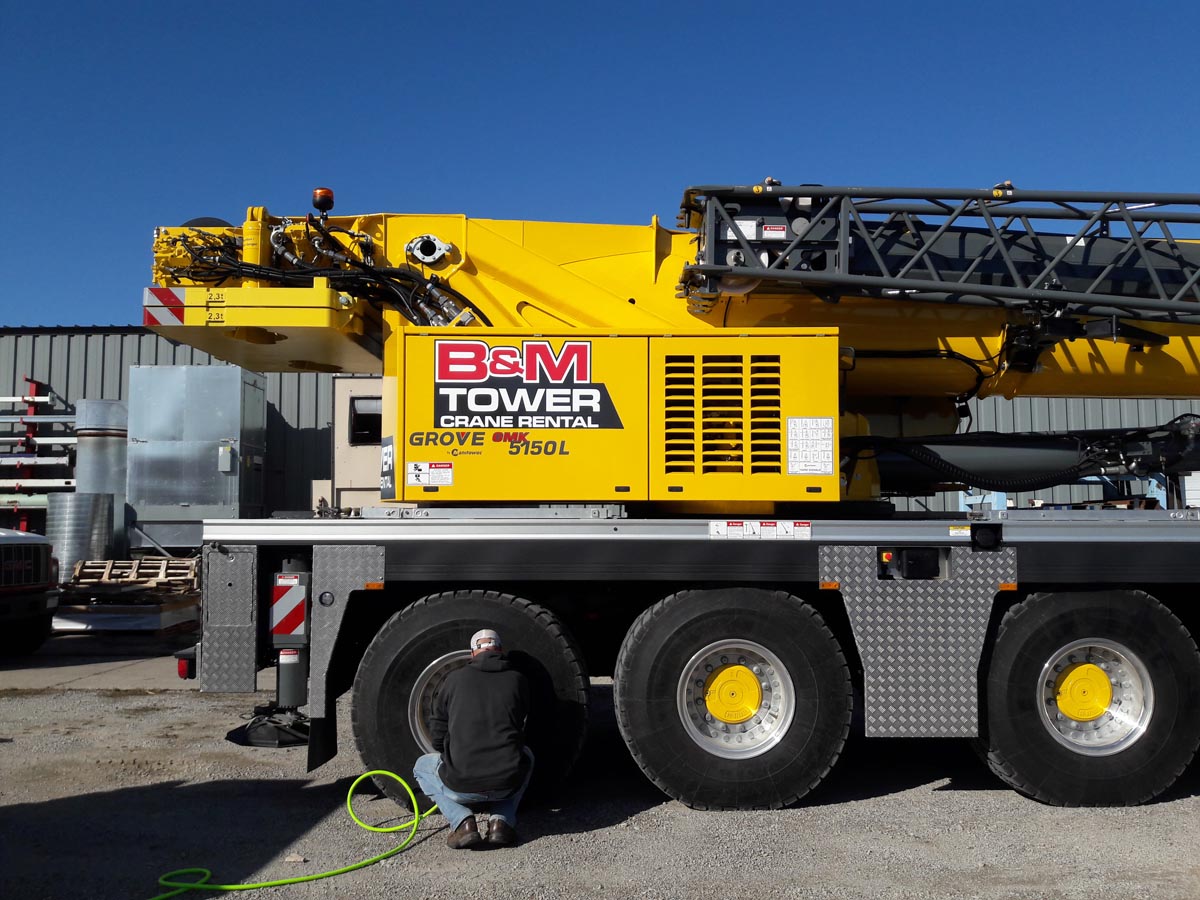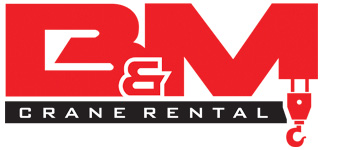Mobile cranes are the workhorses of many industries, particularly where there is any construction involved. These vehicles combine heavy-lifting power with mobility to allow you to tackle a variety of tasks and loads. But even these powerhouses have their limits.
Not all types of mobile cranes are suitable for every job and worksite. An alternative option, if you are working on a location that has rough and uneven ground, is an all terrain crane.

Here we’re going to help you decide if this is the right vehicle for the job at hand.
What is an all terrain crane?
First, we need to clear up what an all terrain crane is and how it works.
All terrain cranes are a specific type of truck-mounted crane. They differ from standard mobile crane models in their ability to navigate all kinds of terrain, specifically rugged and uneven ground.
In most cases they can traverse a range of surfaces including but not limited to:
- Sand
- Gravel
- Tar
- Asphalt
- Grass
On top of this, these models are capable of handling all kinds of weather conditions.
Generally, all-terrain trucks sport more tires than other types. The number of tires can rise to eighteen in total, but on average, they have between six and eight. Having a large number of tires improves their stability. Plus, they also have fairly high ground clearance.
To help make them more manageable, manufacturers usually equip all terrain crane with four-wheel or all-wheel drive.
Most of these cranes have a hydraulically powered telescopic boom, which means they are highly adjustable. And their lifting capacity is usually between 40 to 1,000 tons depending on the model.
Above all, a qualified operator can drive these vehicles on public roads like highways, in addition to driving them off the road. And they can typically reach speeds of 55 miles per hour on most surfaces.
One example of an all terrain crane is the Grove GMK5150L. The manufacturer outfitted this mobile crane with an independent suspension all-wheel steering system.
Besides this, these cranes use wire technology, which improves ground clearance. And that allows the operators to adjust the suspension to suit the circumstances.
Features like these work together to improve the maneuverability of all terrain cranes.
Limitations of an all terrain crane
However, don’t be tricked by the name. All terrain cranes do have some limitations. But so do all types of cranes.
One of the significant downsides of all terrain models is their weight.
These vehicles can be extremely heavy as most of them come equipped with two engines. One engine powers the truck, and the other powers the boom or arm of the crane.
This can be a problem if the soil on site is unstable or unable to support that amount of weight. According to OSHA and ASME safety standards, you need to inspect the condition of the soil before using a crane. This involves testing whether it has the correct bearing strength.
Additionally, operators will need to use outriggers with some vehicles, which can increase the price of the rental.
Keep in mind that each all terrain model is unique.
Therefore, you will need to consult your crane rental company about the limitations and capabilities of the specific model. The company might also have its own rules and regulations about how cranes must be used – to keep both their operators and vehicles safe.
When should you use an all terrain crane?
Overall, all terrain cranes are incredibly versatile and are therefore suitable for a variety of applications. Their ability to navigate both on public roadways and off-road landscapes makes them one of the most flexible vehicles available.
Generally, they are ideal in cases where you need a crane for a site with no direct road access. And they are also good for situations where you need to travel quite a distance on public roads before going off the road. These trucks are great if you’re looking for maneuverability, mobility, adjustability, stability, and durability.

That’s why people often favor them for applications like the erection of wind turbines, the installation of oil and gas pipelines, and the hauling of heavy materials.
What are the alternatives?
So what can you do if an all terrain crane is unavailable or not suited for your job or site?
Well, there are two main alternatives. If the terrain is not too rough, you might still be able to use a standard model crane with a sturdy build and high clearance.
However, if this doesn’t cut it either, you should consider choosing a rough terrain crane. Similar to the all terrain vehicles, they are made to handle harsh conditions. But there are some major differences in their construction.
Rough terrain cranes generally have fewer tires and only one engine, which means they are much lighter. This feature means they can circumvent issues with vehicle weight. But on the downside, you can’t drive them on highways and most other public roads. Therefore, you will have to pay to transport the vehicle to the site.
Their build means that rough terrain cranes can often navigate uneven surfaces that their all terrain counterparts can’t.
Don’t let anything get in the way
In the right hands, mobile cranes can be powerful tools that to help you get almost any lifting job done. All terrain models are especially useful as they can handle rough and uneven terrain that could leave other models stranded.
However, there are still some obstacles that even these tough cranes can’t conquer without assistance. Therefore, it’s crucial that you take some steps to prepare your jobsite and get it ready for the arrival of the rental crane.


